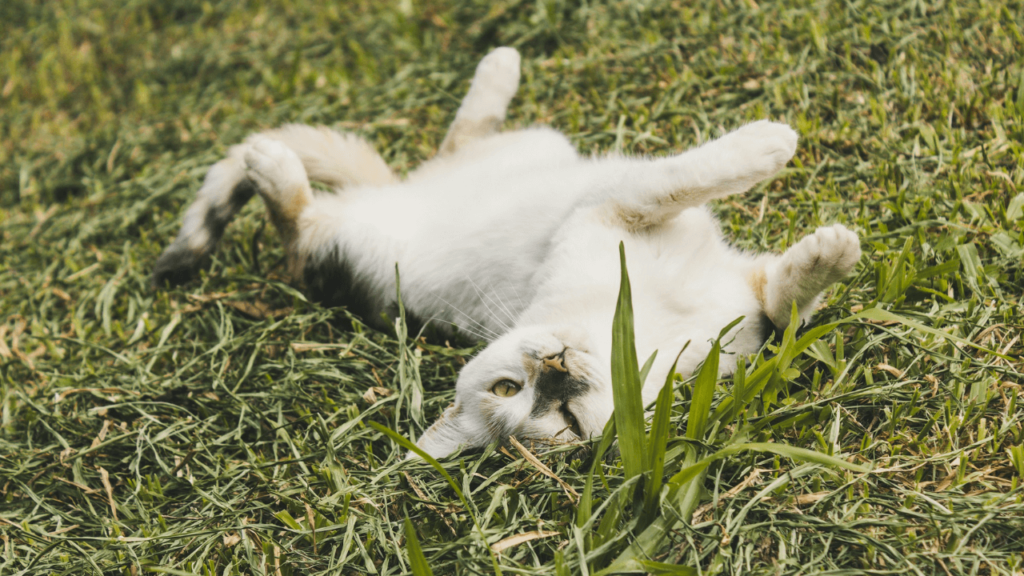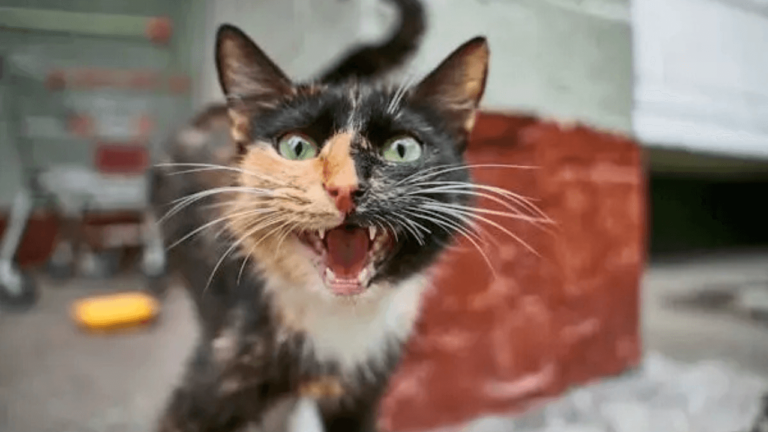How to Potty Train a Kitten Without a Litter Box : A Comprehensive Guide
Potty train a kitten without a litter box may seem challenging, but it’s achievable with the right approach. While most people rely on litter boxes, some prefer alternative methods, especially if they want their cats to use outdoor areas instead. This guide offers comprehensive steps on training your kitten to use outdoor areas for potty needs, along with advice on common questions about training techniques, timeline expectations, and troubleshooting issues along the way.
Understanding the Basics of Potty Train a Kitten Without a Litter Box
Kitten potty training begins with patience and routine. Typically, kittens learn bathroom habits from their mothers, but if you have an orphaned kitten, you’ll need to guide it through each step. Whether you’re aiming to train an outdoor or indoor cat, kittens respond well to consistency and encouragement.
Can You Potty Train a Kitten Without a Litter Box?
Yes, kittens can be trained to use outdoor areas instead of litter boxes. It may take some extra patience, but with practice, many cats will willingly adapt to going outside. This approach requires setting up a specific outdoor potty area and training your kitten to recognize it as the designated spot. It’s essential to take time for positive reinforcement, as this will make it easier for your kitten to establish habits.

Pros and Cons of Training a Kitten Without a Litter Box
- Pros:
- Reduces odors in the home and eliminates the need for regular litter changes.
- Cuts costs associated with litter products.
- Provides a natural environment for your kitten’s bathroom habits.
- Cons:
- It requires monitoring to ensure the kitten doesn’t wander off.
- Risk of exposure to other animals or hazards outside.
- It may require more time for consistency, especially during initial training.
And from that, we found out how to potty train a kitten without a litter box
Preparing Your Kitten for Outdoor Potty Training
Before training your kitten to use an outdoor area, make sure it is accustomed to your home and feels safe. Introducing it to an outdoor potty spot should be gradual to avoid overwhelming it.
How to Train a Cat to Go Outside and Not Run Away
Training your kitten to use the outdoors also involves leash training or supervised outdoor visits initially. A gradual introduction to outdoor potty spots will help your kitten associate a specific area with its bathroom needs. And from that, we found out how to potty train a kitten without a litter box
How to Litter Train a Kitten Fast Using Outdoor Methods
If you want to train your kitten quickly, maintain a strict schedule of taking it to the designated outdoor area. Use rewards and praise when the kitten successfully uses the spot, helping reinforce this as its bathroom area.
Training Techniques for Orphaned Kittens
Orphaned kittens may require additional patience and guidance since they don’t have a mother cat to learn from.
How to Train an Orphaned Kitten to Use a Litter Box (If Needed)
If your orphaned kitten needs to use an indoor litter box temporarily, ensure the box is placed in a quiet area, and guide the kitten to it after meals or naps. As it becomes comfortable, transition it to the outdoor area by gradually moving the litter box closer to the door and finally to the outside. And from that, we found out how to potty train a kitten without a litter box.
Choosing a Potty Spot for Your Kitten Outdoors
Designate a consistent, safe area in your yard or garden where your kitten can use the bathroom. Avoid spots with high traffic or strong smells, as these can be distracting for kittens.

Encouraging Your Kitten to Return to the Same Spot
To reinforce using the same spot, place small soil or natural material from a previous bathroom visit in the designated area. The scent will help the kitten recognize the place as its own.
How to Know When a Cat Needs to Go to the Bathroom
Recognizing when your kitten needs to relieve itself can prevent accidents.
Recognizing the Signs and Signals
Typical signs that a kitten needs to go include:
- Pawing or scratching at the floor.
- Meowing in a specific tone.
- Sniffing or circling an area.
Will a Cat Use a Litter Box Without Litter?
Cats may use a litter box without litter, but many prefer having a natural material to dig in.
Pros and Cons of Litter-Free Options for Cats
Using litter-free boxes can be convenient, but they may require extra cleaning. Some cats adapt to litter-free boxes, but for others, this may be too unnatural. If your cat struggles, using a litter box with soil or sand may better replicate outdoor conditions.
How to Transition a Kitten from Litter Box to Outdoor Potty Habits
Start by gradually moving the indoor litter box closer to the outside each day, reinforcing its use in outdoor settings.
Tips for Gradual Transition from Indoor to Outdoor
Place the litter box just outside the door and observe your kitten’s response. With each success, reduce reliance on the box, eventually guiding the kitten to the preferred outdoor potty spot alone. And from that, we found out how to potty train a kitten without a litter box.
How Long Does It Take to Train a Cat to Use the Toilet or Outdoor Areas?
The timeline varies for each kitten. Generally, outdoor training can take a few weeks to months, depending on the kitten’s temperament, age, and prior habits.
Typical Timeline for Outdoor and Indoor Potty Training
- Kittens: 4-8 weeks for outdoor training.
- Older Cats: May take longer, as they’re more set in their ways.
Common Mistakes in Potty Training a Kitten Without a Litter Box
Avoid common mistakes, such as inconsistent timing or ignoring successful outdoor potty sessions without reinforcement. Training a kitten requires patience and consistency, so try not to rush the process.
how to tell if a cat is angry or playing
Creating a Comfortable Outdoor Environment for Your Kitten
Making the outdoor potty area comfortable and familiar is key to encouraging regular use. Cats often prefer areas that mimic their natural instincts, like sandy soil or a secluded garden corner. Here are some tips to make the area inviting:
- Use Soft Soil or Sand: These textures feel similar to litter, making the transition smoother.
- Pick a Quiet Spot: Avoid areas with lots of noise or activity that could startle your kitten.
- Ensure Safety: Keep the area free from chemicals, pesticides, or sharp objects. If possible, fence in a small area or use a cat harness initially to prevent wandering.
And from that, we found out how to potty train a kitten without a litter box.

Reinforcing Good Habits and Building Routines
Kittens learn best with routine, so take them to their outdoor potty area around the same times every day, particularly after meals or naps. Here’s how you can establish a routine effectively:
- Morning and Evening Trips: Cats are naturally most active in the early morning and evening, making these ideal times for bathroom trips.
- Positive Reinforcement: Praise or reward your kitten each time it uses the designated outdoor area. Treats or gentle petting go a long way.
- Gradual Time Increase Outside: As your kitten becomes more accustomed to the area, gradually increase the amount of time it spends outside, which can help it feel more comfortable.
Transitioning from Litter Box to Outdoor Potty Only
If your kitten was initially using an indoor litter box, transitioning to an entirely outdoor routine can take time. Follow these steps for a smoother process:
- Slowly Relocate the Litter Box Outdoors: Place the litter box near the door that leads outside, then move it just outside. Over time, shift it further toward the permanent outdoor area.
- Reduce Litter Gradually: If your kitten is still attached to litter, gradually reduce the amount in the box until it becomes accustomed to the outdoor ground.
- Reinforce Outdoors Only: Stop rewarding indoor use of the box as your kitten transitions to going exclusively outside.
And from that, we found out how to potty train a kitten without a litter box.
Addressing Potential Challenges and Troubleshooting
Training a kitten without a litter box isn’t without its hurdles. Here are some common challenges and solutions:
- Weather Concerns: On rainy or cold days, an outdoor toilet area may be less appealing. Consider creating a shelter where your kitten can stay dry.
- Wandering Tendencies: If your kitten seems distracted or inclined to explore beyond the designated area, use a harness or fencing until it builds a habit of staying in the correct spot.
- Accidents Indoors: If accidents happen indoors, clean the area thoroughly to remove any lingering scent that could encourage your kitten to use the same spot again.
How Long Does It Take to Train a Kitten to Use an Outdoor Potty?
The length of time it takes to fully transition a kitten to outdoor potty habits depends on several factors, such as the kitten’s age, temperament, and prior habits. Here’s a general timeline to keep in mind:
- Young Kittens (Under 3 Months): Kittens at this age may need around 4–6 weeks to establish outdoor potty habits.
- Older Kittens (3-6 Months): For older kittens, it may take 2-3 weeks, as they’re better able to control their bladder and are more adaptable.
- Adult Cats: If you’re transitioning an adult cat, expect a timeline of 4–8 weeks, as they may need time to unlearn previous habits.
Common Mistakes in Training a Kitten Without a Litter Box
To make the transition as smooth as possible, avoid these common mistakes:
- Inconsistency: Skipping trips outside can confuse your kitten. Consistency helps establish reliable habits.
- Punishing Accidents: If your kitten has an accident indoors, avoid punishment, as this can make it anxious or fearful. Instead, gently guide it outside the next time.
- Lack of Positive Reinforcement: Forgetting to reward outdoor potty use may slow down the training process. Regular rewards help reinforce the behavior.
And from that, we found out how to potty train a kitten without a litter box.

Conclusion
Training a kitten to use an outdoor potty area rather than a litter box can be both rewarding and environmentally friendly. It requires a structured approach, patience, and positive reinforcement to help the kitten establish healthy habits. By following these guidelines and building a steady routine, you can help your kitten adjust to an outdoor potty lifestyle smoothly and successfully. And from that, we found out how to potty train a kitten without a litter box.
With consistent effort and the right methods, your kitten can enjoy the natural environment, and you can enjoy a litter-free home. Embrace each step as a learning experience for you and your kitten, knowing that the outcome will be a clean and manageable potty routine that benefits both of you.
FAQ Section
How can I potty train my kitten if I don’t want a litter box indoors?
Set up a safe, designated outdoor toilet area. Take the kitten there routinely, especially after meals or naps, and use positive reinforcement. With time, your kitten will associate this area with going to the bathroom.
What if my kitten refuses to use the outdoor spot?
If the kitten resists, try placing a small amount of litter or soil from its indoor litter box in the outdoor area. This familiar scent can help your kitten feel more at ease. Remember to reward each successful attempt.
How do I know when my kitten needs to relieve itself?
Common signs include circling, sniffing, meowing, and pawing at surfaces. As soon as you notice these signs, gently guide your kitten to the designated outdoor area.
Can I use litter-free options indoors before transitioning outdoors?
Yes, but this works best with cats that are already comfortable with outdoor potty training. Some kittens might adapt to litter-free boxes indoors, though others prefer the texture of litter.
What is the best way to help an orphaned kitten learn potty habits?
For very young, orphaned kittens, gently stimulate the genitals with a soft cloth to encourage them to relieve themselves. Older orphaned kittens can be guided to a litter box or outdoor area after meals until they develop consistent habits. And from that, we found out how to potty train a kitten without a litter box.
Can I train a cat to use a specific area outside without it running away?
Yes, but start by using a harness and gradually increase its comfort with the designated area. With positive reinforcement and a familiar spot, most kittens will associate this area as their bathroom spot without straying. And from that, we found out how to potty train a kitten without a litter box.



One Comment